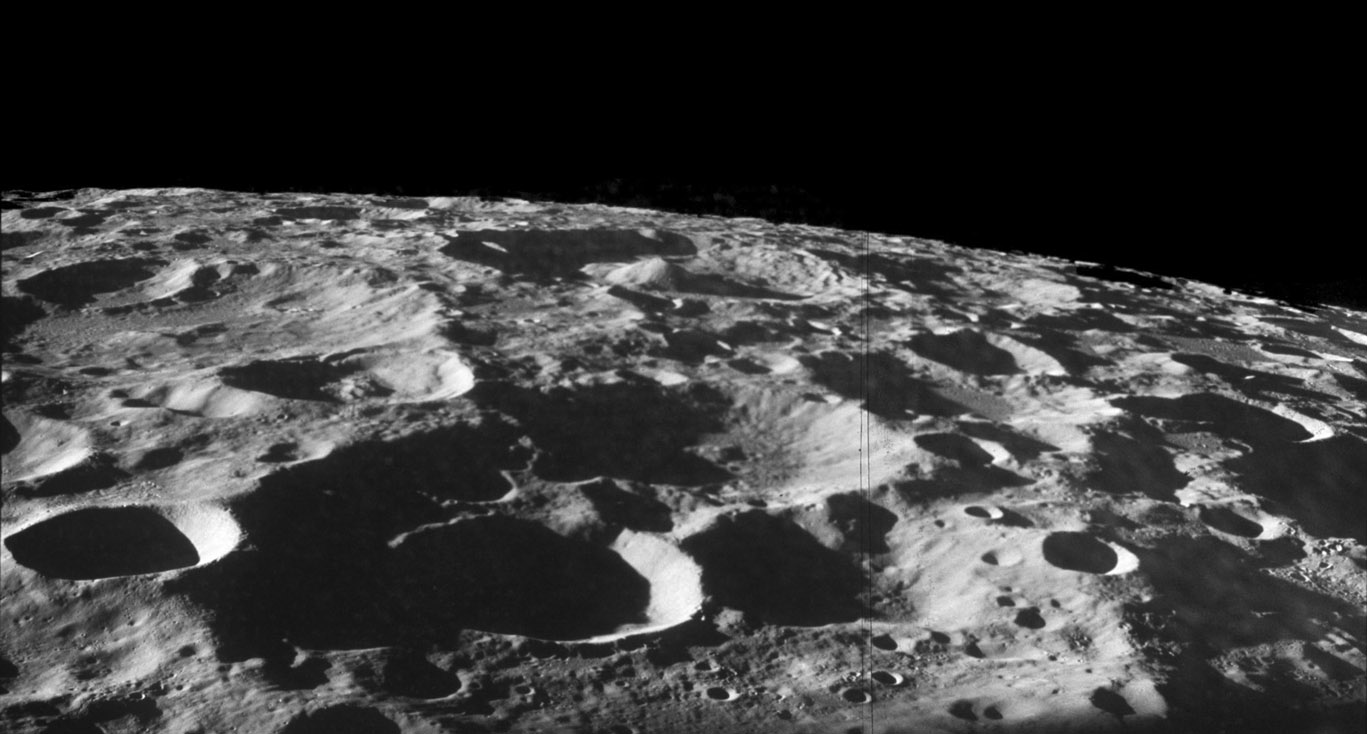Difference between revisions of "August 16, 2009"
| (2 intermediate revisions by the same user not shown) | |||
| Line 1: | Line 1: | ||
__NOTOC__ | __NOTOC__ | ||
=Big Bounce= | =Big Bounce= | ||
| + | <!-- Start of content --> | ||
<!-- ws:start:WikiTextHeadingRule:2:<h1> --> | <!-- ws:start:WikiTextHeadingRule:2:<h1> --> | ||
<!-- ws:start:WikiTextLocalImageRule:8:<img src="/file/view/LPOD-Aug16-09.jpg/84369635/LPOD-Aug16-09.jpg" alt="" title="" style="width: 1000px;" /> -->[[File:LPOD-Aug16-09.jpg|LPOD-Aug16-09.jpg]]<!-- ws:end:WikiTextLocalImageRule:8 --><br /> | <!-- ws:start:WikiTextLocalImageRule:8:<img src="/file/view/LPOD-Aug16-09.jpg/84369635/LPOD-Aug16-09.jpg" alt="" title="" style="width: 1000px;" /> -->[[File:LPOD-Aug16-09.jpg|LPOD-Aug16-09.jpg]]<!-- ws:end:WikiTextLocalImageRule:8 --><br /> | ||
<em>Apollo 17 image from [http://www.lpi.usra.edu/resources/apollo/frame/?AS17-162-24106 LPI Apollo Image Atlas]</em><br /> | <em>Apollo 17 image from [http://www.lpi.usra.edu/resources/apollo/frame/?AS17-162-24106 LPI Apollo Image Atlas]</em><br /> | ||
<br /> | <br /> | ||
| − | When Apollo 11 orbited the Moon the astronauts noticed a strange [ | + | When Apollo 11 orbited the Moon the astronauts noticed a strange [[February_12,_2007|Dione]] and some other icy moons of Jupiter and Saturn also have large, tall central peaks, suggesting that the magnitude of the rebound is related to the strength of the target rocks. Perhaps Icarus impacted a region which was warm and better able to flow during impact?<br /> |
<br /> | <br /> | ||
<em>[mailto:tychocrater@yahoo.com Chuck Wood]</em><br /> | <em>[mailto:tychocrater@yahoo.com Chuck Wood]</em><br /> | ||
| Line 12: | Line 13: | ||
Apollo image AS17-162-24106<br /> | Apollo image AS17-162-24106<br /> | ||
<br /> | <br /> | ||
| + | <p><b>Yesterday's LPOD:</b> [[August 15, 2009|Milk of Plato]] </p> | ||
| + | <p><b>Tomorrow's LPOD:</b> [[August 17, 2009|Why Are Maria Where They Are?]] </p> | ||
<hr /> | <hr /> | ||
| + | {{wiki/ArticleFooter}} | ||
Latest revision as of 22:40, 22 March 2015
Big Bounce

Apollo 17 image from LPI Apollo Image Atlas
When Apollo 11 orbited the Moon the astronauts noticed a strange Dione and some other icy moons of Jupiter and Saturn also have large, tall central peaks, suggesting that the magnitude of the rebound is related to the strength of the target rocks. Perhaps Icarus impacted a region which was warm and better able to flow during impact?
Chuck Wood
Technical Details
Apollo image AS17-162-24106
Yesterday's LPOD: Milk of Plato
Tomorrow's LPOD: Why Are Maria Where They Are?
COMMENTS?
Register, Log in, and join in the comments.



